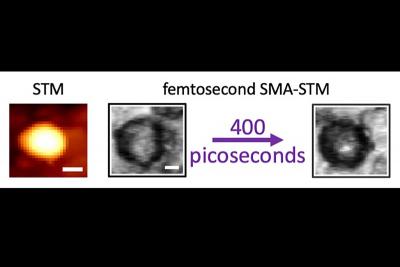Researchers use coherent spectroscopy to gain insights into perovskite quantum dots
Scientists at the Chemistry and Physics Institutes of the University of Campinas (UNICAMP) in the state of São Paulo, Brazil, in collaboration with scientists at the University of Michigan in the United States, have provides insights into the fundamental physics of perovskite quantum dots.
 Nanomaterials of perovskite dispersed in hexane and irradiated by laser. Light emission by these materials is intense thanks to resistance to surface defects (photo: Luiz Gustavo Bonato)
Nanomaterials of perovskite dispersed in hexane and irradiated by laser. Light emission by these materials is intense thanks to resistance to surface defects (photo: Luiz Gustavo Bonato)
"We used coherent spectroscopy, which enabled us to analyze separately the behavior of the electrons in each nanomaterial in an ensemble of tens of billions of nanomaterials. The study is groundbreaking insofar as it combines a relatively new class of nanomaterials - perovskite - with an entirely novel detection technique," Lázaro Padilha Junior, principal investigator for the project on the Brazilian side, explained.

